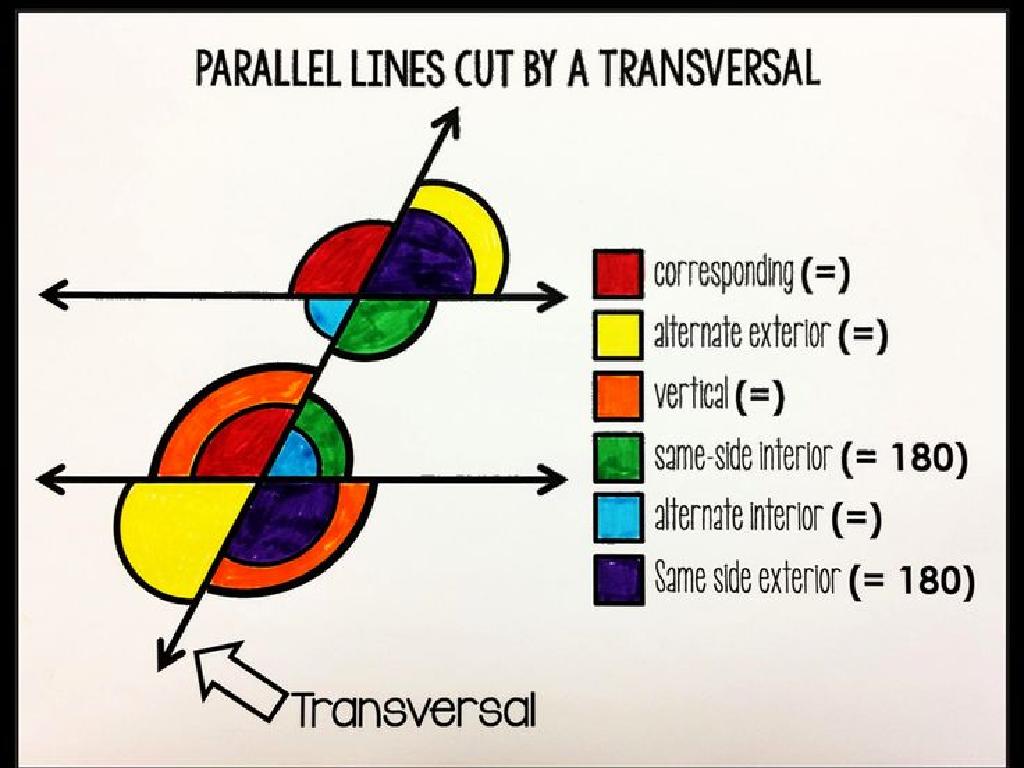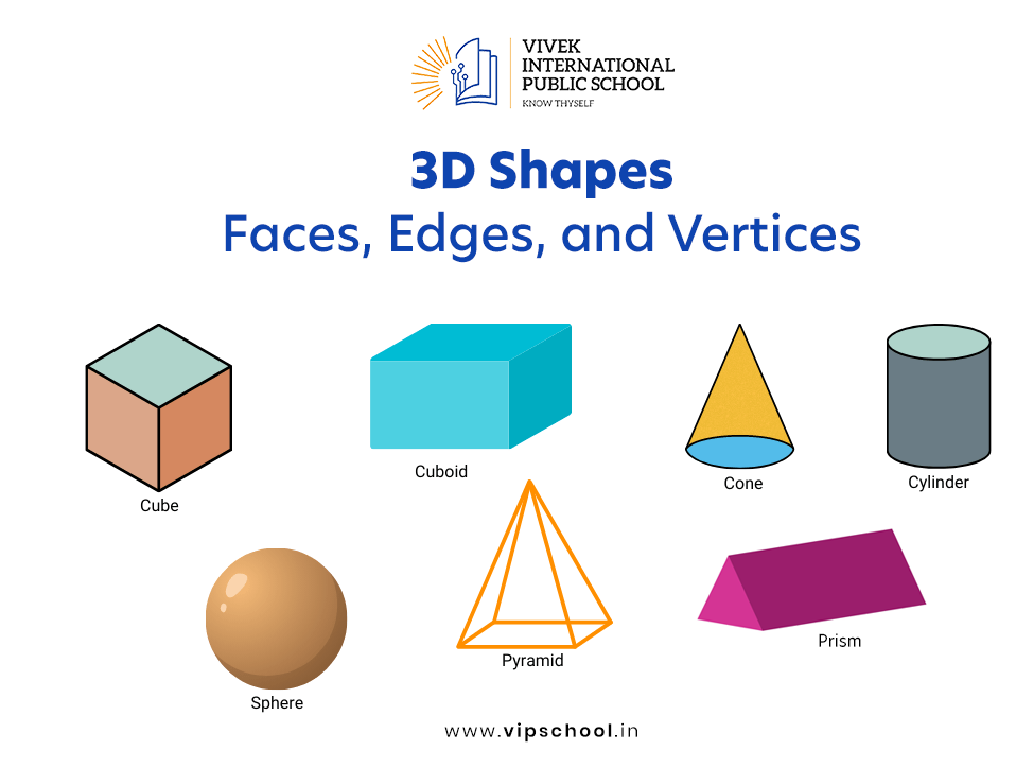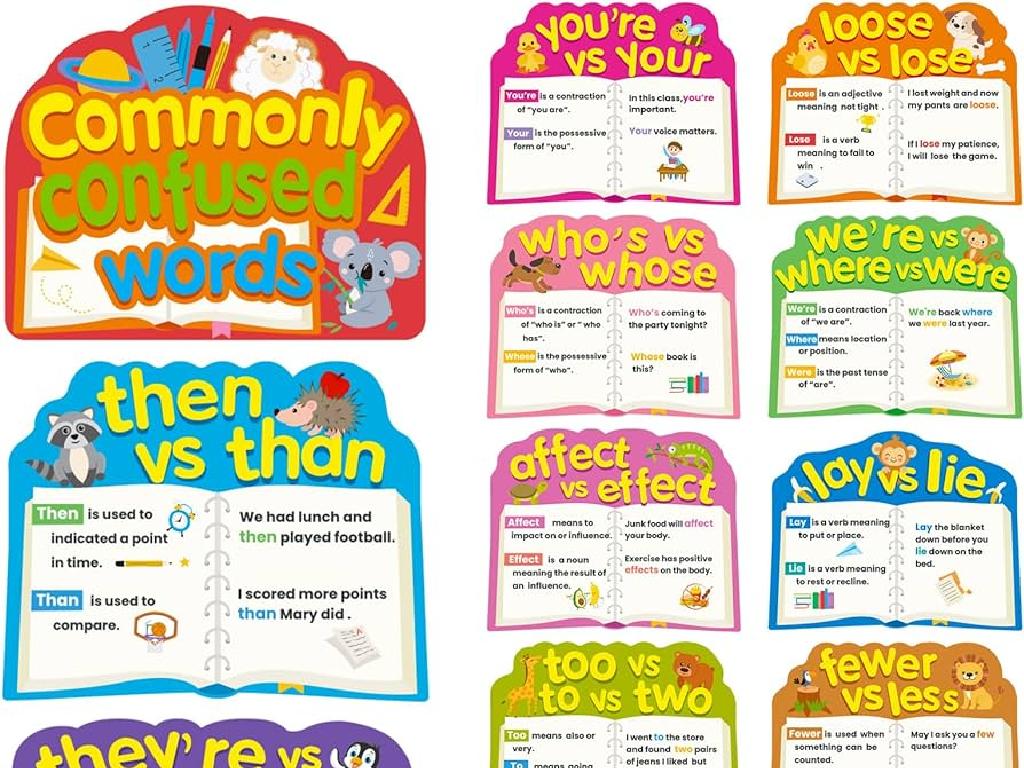Decimal Number Lines
Subject: Math
Grade: Fourth grade
Topic: Relate Fractions And Decimals
Please LOG IN to download the presentation. Access is available to registered users only.
View More Content
Today’s Adventure: Exploring Decimal Number Lines
– What are decimals?
– Decimals represent parts of a whole, like 0.5 is half.
– Decimals on the number line
– Each point on the line is a decimal, showing values between whole numbers.
– Relating decimals to fractions
– A fraction like 1/2 is the same as the decimal 0.5.
– Practice with examples
– We’ll place decimals like 0.3 or 3/10 on the number line.
|
Begin the lesson by introducing decimals as a concept, explaining that they are another way to represent fractions and parts of a whole. Use visual aids to show where decimals fit on the number line between whole numbers. Highlight the relationship between common fractions and their decimal equivalents, ensuring to provide clear examples. Engage the students with hands-on practice by having them place various decimals on a number line. This will help solidify their understanding of the value of decimals and their relation to fractions.
Understanding Decimals on a Number Line
– Decimals show parts of a whole
– Like pieces of a pie cut into 10 slices
– Decimals are based on 10
– Just like counting by tens: 10, 20, 30…
– Each decimal place has value
– The first place after the point is tenths, the second is hundredths
– Examples: tenths, hundredths
– 0.1 is one-tenth, 0.01 is one-hundredth
|
This slide introduces the concept of decimals to fourth-grade students. Begin by explaining that decimals are another way to represent fractions and parts of a whole, using the example of a pie to visualize the concept. Emphasize that our number system is based on the number 10, which makes understanding decimals easier. Clarify the value of each decimal place, starting from the tenths to the hundredths and beyond, and provide examples for each. Encourage students to think of money as a real-life example, where one dollar is like a whole pie, and cents are parts of that pie.
Understanding Decimal Number Lines
– Number lines include decimals
– Decimals sit between whole numbers
– Example: 0.5 is between 0 and 1
– 0.5 is exactly in the middle of 0 and 1
– Practice placing decimals on a line
– Find where 0.3 or 0.7 would go on the line
|
This slide introduces students to the concept of decimal number lines, which are extensions of whole number lines that they are already familiar with. Emphasize that just like whole numbers, decimals have a specific place on the number line. Use 0.5 as a clear example because it’s a familiar fraction (half) and it’s easy to visualize in the middle of 0 and 1. Encourage students to think of the number line as a ruler where decimals are the smaller marks between the larger whole numbers. For practice, ask students to place other decimals like 0.3 or 0.7 on the number line to reinforce their understanding of decimal placement.
Relating Fractions to Decimals on the Number Line
– Convert fractions to decimals
– 1/2 equals 0.5 on the number line
– Just like 1/2, 1/4 becomes 0.25, and 3/4 is 0.75
– Explore other fraction-decimal conversions
– We’ll convert fractions like 1/3, 1/5, 3/8 and see where they are on the decimal number line
– Practice with examples
– Use number lines to visualize and confirm our conversions
|
This slide introduces the concept of converting fractions to decimals and locating them on a number line. Start by explaining that every fraction can be expressed as a decimal, and this is useful for comparing and ordering numbers. Use 1/2 as a familiar example, showing that it is the same as 0.5 on the number line. Then, encourage students to think of other fractions they know and predict their decimal equivalents before confirming on the number line. Provide practice examples for students to work on, such as converting 1/3, 1/5, 3/8, and placing them on a number line. This visual representation helps solidify their understanding of the relationship between fractions and decimals.
Placing Decimals on the Number Line
– How to place decimals on a line
– Decimals fit between whole numbers based on their value
– Use benchmarks: 0, 0.5, and 1
– 0 is start, 0.5 is middle, 1 is end of the line
– Practice with 0.25, 0.75, 0.33
– Where do 0.25, 0.75, and 0.33 go between 0 and 1?
– Understanding decimal order
– Decimals increase as you move right on the line
|
This slide is aimed at helping students understand how to correctly place decimal numbers on a number line. Start by explaining that a number line is a visual representation where numbers are placed in order based on their value. Introduce benchmarks, which are reference points that students can use to help them determine where other decimals go. For example, 0 is the starting point, 0.5 is halfway between 0 and 1, and 1 is the end point on a simple number line. Have students practice by placing the decimals 0.25, 0.75, and 0.33 on the number line, discussing how each decimal is closer to one of the benchmarks. Emphasize that as you move to the right on the number line, the decimals increase in value. This exercise will build their understanding of decimal values and their spatial representation.
Comparing Decimals on a Number Line
– Decimals can be compared
– Which is greater: 0.7 or 0.68?
– Is 0.7 larger or smaller than 0.68?
– Use a number line to compare
– Place decimals on a number line to visualize
– Decimals further right are larger
– The decimal on the right is the greater number
|
This slide introduces students to the concept of comparing decimals using a number line, which is a visual tool that helps them understand the value of decimals in relation to each other. Start by explaining that just like whole numbers, decimals can be compared to see which is larger or smaller. Use the example provided (0.7 vs. 0.68) to show how to place decimals on a number line and determine which is greater by seeing which one is further to the right. Emphasize that the further a decimal is to the right on the number line, the larger its value. Encourage students to practice with additional examples and to draw their own number lines for comparison.
Class Activity: Decimal Detective
– Become a decimal detective!
– Find decimals on the number line
– Where does 0.5 or 0.75 go on the line?
– Pair up and place decimals
– Discuss your reasoning
– Explain why you placed decimals there
|
In this engaging class activity, students will work in pairs to practice placing decimals on a number line, which helps solidify their understanding of the relationship between fractions and decimals. Provide each pair with a number line and a set of decimal cards. Encourage them to discuss and reason out the correct placement of each decimal, fostering communication and critical thinking skills. As they work, circulate the room to offer guidance and ensure understanding. Possible variations of the activity could include finding equivalents for given fractions, ordering decimals from least to greatest, or even creating their own number lines with decimals. This hands-on experience is crucial for helping students visualize and comprehend decimal values in a fun, interactive way.
Conclusion & Review: Decimals on the Number Line
– Recap of decimal concepts
– Decimals & fractions on number lines
– Each fraction has a decimal equivalent that can be plotted on the number line.
– Real-life examples of decimals
– Prices, measurements, and time often use decimals.
– Reflect on today’s learning
– Think about how decimals appear in daily life and share.
|
This slide aims to summarize and reinforce the day’s lesson on decimals. Start by reviewing the key concepts of decimals that were covered. Explain how every fraction can be represented as a decimal, and vice versa, using the number line as a visual aid. Discuss with students where they have encountered decimals in their daily lives, such as in money transactions, measurements for cooking, or even on their digital clocks. Encourage students to reflect on what they’ve learned and how they can apply this knowledge outside of the classroom. This reflection helps solidify their understanding and recognize the practical applications of decimals.






